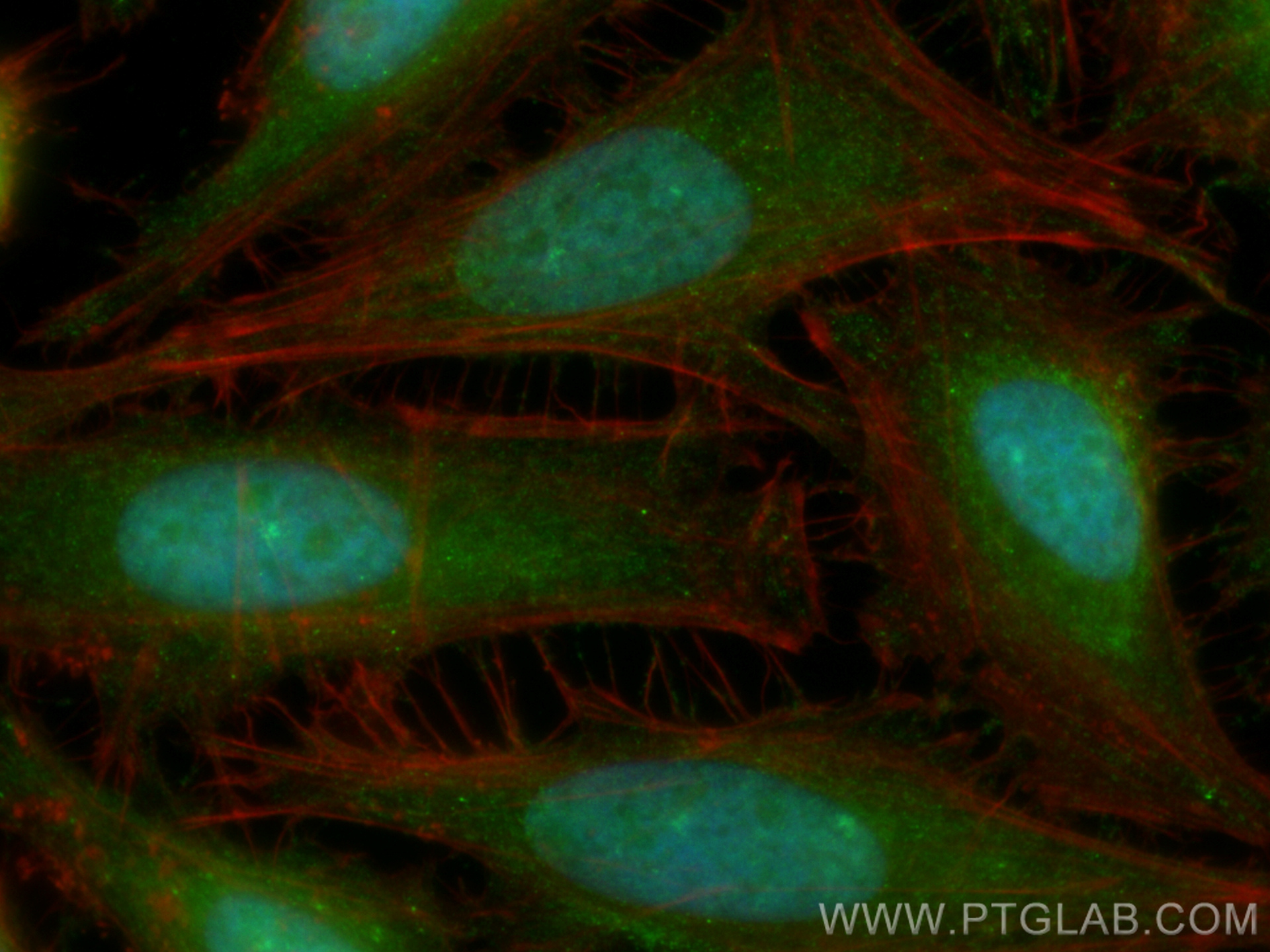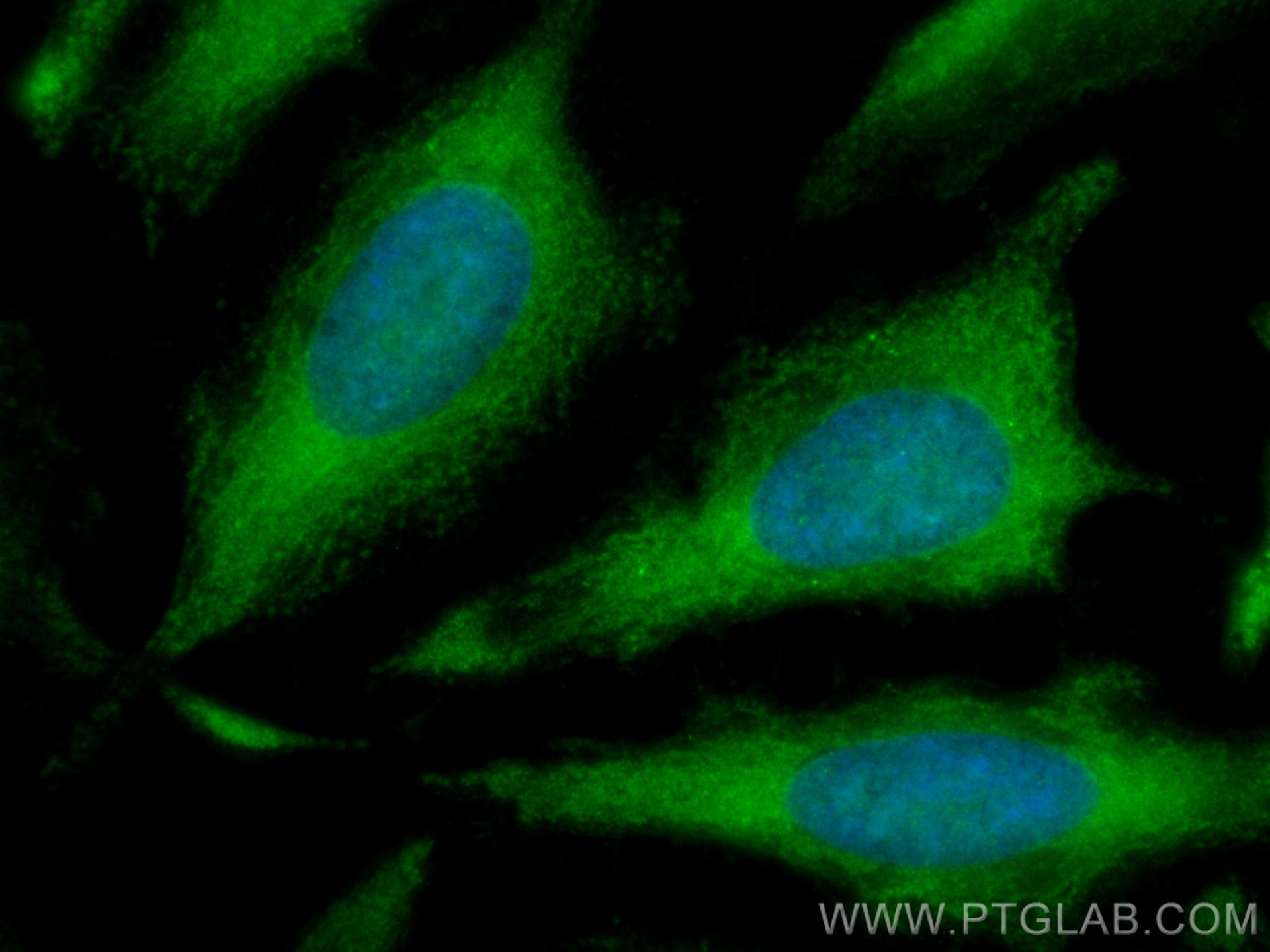验证数据展示
经过测试的应用
| Positive IF/ICC detected in | HeLa cells |
推荐稀释比
| 应用 | 推荐稀释比 |
|---|---|
| Immunofluorescence (IF)/ICC | IF/ICC : 1:50-1:500 |
| It is recommended that this reagent should be titrated in each testing system to obtain optimal results. | |
| Sample-dependent, Check data in validation data gallery. | |
产品信息
CL488-14787 targets CBS in IF/ICC applications and shows reactivity with human, mouse, rat samples.
| 经测试应用 | IF/ICC Application Description |
| 经测试反应性 | human, mouse, rat |
| 免疫原 |
CatNo: Ag6437 Product name: Recombinant human CBS protein Source: e coli.-derived, PGEX-4T Tag: GST Domain: 206-551 aa of BC000440 Sequence: VAWRLKNEIPNSHILDQYRNASNPLAHYDTTADEILQQCDGKLDMLVASVGTGGTITGIARKLKEKCPGCRIIGVDPEGSILAEPEELNQTEQTTYEVEGIGYDFIPTVLDRTVVDKWFKSNDEEAFTFARMLIAQEGLLCGGSAGSTVAVAVKAAQELQEGQRCVVILPDSVRNYMTKFLSDRWMLQKGFLKEEDLTEKKPWWWHLRVQELGLSAPLTVLPTITCGHTIEILREKGFDQAPVVDEAGVILGMVTLGNMLSSLLAGKVQPSDQVGKVIYKQFKQIRLTDTLGRLSHILEMDHFALVVHEQIQYHSTGKSSQRQMVFGVVTAIDLLNFVAAQERDQK 种属同源性预测 |
| 宿主/亚型 | Rabbit / IgG |
| 抗体类别 | Polyclonal |
| 产品类型 | Antibody |
| 全称 | cystathionine-beta-synthase |
| 别名 | Beta thionase, CBS, cystathionine beta synthase, HIP4, Serine sulfhydrase |
| 计算分子量 | 61 kDa |
| 观测分子量 | 61-63 kDa |
| GenBank蛋白编号 | BC000440 |
| 基因名称 | CBS |
| Gene ID (NCBI) | 875 |
| RRID | AB_2934409 |
| 偶联类型 | CoraLite® Plus 488 Fluorescent Dye |
| 最大激发/发射波长 | 493 nm / 522 nm |
| 形式 | Liquid |
| 纯化方式 | Antigen affinity purification |
| UNIPROT ID | P35520 |
| 储存缓冲液 | PBS with 50% glycerol, 0.05% Proclin300, 0.5% BSA, pH 7.3. |
| 储存条件 | Store at -20°C. Avoid exposure to light. Stable for one year after shipment. Aliquoting is unnecessary for -20oC storage. |
背景介绍
The CBS gene encodes cystathionine beta-synthase, which catalyzes the first irreversible step of transsulfuration. The CBS enzyme is a homotetramer of 63-kD subunits and requires pyridoxal phosphate and heme for activity(PMID:11230183). CBS protein is localized in most areas of the brain, but predominantly in the cell bodies and neuronal processes of Purkinje cells and Ammon's horn neurons(PMID:12588964).
实验方案
| Product Specific Protocols | |
|---|---|
| IF protocol for CL Plus 488 CBS antibody CL488-14787 | Download protocol |
| Standard Protocols | |
|---|---|
| Click here to view our Standard Protocols |



